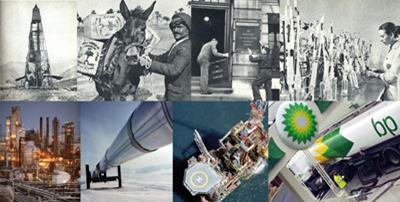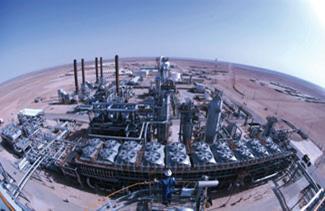As BP approaches its centenary, Sean Milmo finds out how the UK energy giant plans to innovate its way out its recent troubles and to navigate a turbulent market
As BP approaches its centenary, Sean Milmo finds out how the UK energy giant plans to innovate its way out its recent troubles and to navigate a turbulent market
The world’s third largest energy company made a fresh start last year with the appointment of a new boss. The incumbent, Lord Browne - regarded by his peers as one of the country’s finest businessmen - stepped down in May 2007 after 12 years as chief executive. It was Browne who originally sought to reinvent BP as a green energy company, coining its ’Beyond Petroleum’ slogan. But despite that success, his replacement, the former head of exploration and production Tony Hayward, took the helm of a company with a bruised reputation.
In 2006, BP was hit by two major US disasters: a 201,000-gallon crude spill at its oil fields in Prudhoe Bay, Alaska; and an explosion at its Texas City refinery, Texas, which killed 15 workers and injured more than 170 others. The company was found to be at fault in both cases.

It also faced prosecution for its part in a scheme to inflate the price of propane, which was estimated to have cost the consumer $53.3million (?27.4 million).
But in October 2007, just a few months after Hayward’s official appointment, it seemed the slate was wiped clean. BP agreed to pay a final settlement of $373 million to the US Justice Department, drawing a line under all three cases.
Having put the past behind him, Hayward now plans to steer the company back on course, with what he described in one of his first speeches as chief executive as a ’fundamental shift’ in its operation. At the Asia Oil and Gas Conference in Kuala Lumpur, Malaysia in June, he blamed chronic lack of investment for the increase in oil prices. ’Producers are being hampered by 25 years of low investments, because of low prices,’ he told the conference. ’The result is a supply chain being stretched to breaking point.’

As it looks towards next year’s centenary celebrations, BP, like other international oil companies (IOCs), is reacting to both a different competitive environment and to rising demand - not only for more oil and gas, but for alternative energy, to provide more secure energy supplies and curb the growth in emissions of greenhouse gases.
This has forced the company to become more technologically inventive, harnessing chemistry in a variety of ways.
Seeking an alternative?
One key focus of this technological drive is the provision of energy from alternatives to oil and natural gas, one of which is coal - from which BP plans to produce liquids for fuels and chemicals. It is working on methods for separating hydrogen from the carbon in coal to supply an efficient fuel for electricity generation.
In renewable energy the company is already deeply involved in solar and wind power. It runs one of the largest wind farm operations in the US and operates the country’s biggest plant for the manufacture of solar cells.
Most of its profit is still derived from BP’s more traditional ventures. Last year the vast majority of its sales of $284 billion and earnings before interest and tax (Ebit) of $32 billion came from oil and gas, transportation fuels and petrochemicals. The alternative energy business which includes solar, wind and low-carbon energy activities, accounted for a small proportion of $21 billion in sales of the company’s gas, power and renewables segment. Nonetheless BP estimated earlier this year that it had a market value of $5-7 billion.
The operation, which also comprises biofuels, hydrogen production and carbon capture and storage (CCS), is being managed as a corporate venture in which the main measure of performance will be its equity value.
Planning ahead
In order to realise its vision for the future, the company is adding more variety to its technological platforms. In addition to the traditional oil industry disciplines of engineering and geology, it is putting a much greater emphasis on chemistry, chemical engineering and, to a lesser extent, biosciences.
’BP recognises the need to deepen its research base,’ says Vernon Gibson, professor of inorganic chemistry at Imperial College, London, and technology fellow for BP Research and Technology. ’This means more chemistry and more chemical engineering,’ he adds. ’At the end of the day chemistry will provide the solutions or make a massive contribution to them.’
And a new recruitment drive is upgrading the pool of skills BP needs to carry out this research. Its intake of graduates amounts to over 750 a year compared with 300 three years ago. At the same time it has been boosting both R&D expenditure and the scope of its research. Since 2003 R&D expenditure has been going up by an average 15 per cent annually to $566 million in 2007.
Through partnerships with universities and research institutes and by establishing R&D projects within academia, it has widened its exploratory research.
The recently created Energy Biosciences Institute at the University of California, Berkley, US, was backed by a $500 million endowment from the company.
Around half of BP’s budget for R&D is allocated to the development of upstream technologies because the company’s priority is to achieve high output levels from existing and future oil and gas reservoirs. Oil and gas extraction is no longer straightforward, as many remaining reserves are tightly packed in rock formations deep under the ground or the seabed. And this year’s R&D spend in exploration and production is expected to be increased by almost 50 per cent.
The objective is a substantial improvement in its recovery rates. Currently the average worldwide recovery level for a typical oil reservoir is around 35 per cent of the original oil in place. But with a growing number of fields this can be pushed up to as far as 50-60 per cent with the aid of effective techniques for enhanced oil recovery (EOR).
A succession of EOR technologies have been applied in the 30 years of operation at the Prudhoe Bay oil field. These have included horizontal and coiled tubing drilling and combinations of gas and water injection. Now BP has raised its initial estimate of 40 per cent recovery from the field to 60 per cent.
The basic aim behind EOR techniques is to ensure that the pressure on the oil held in the pores of reservoir rocks is greater than the hydrostatic pressure at the base of the production well. In this way oil flows naturally into the well and up to the surface.
This is principally done by injecting water or gas into the reservoir to maintain pressure in the rock pores. BP’s expertise is in water flooding or the flushing of oil towards the production wells with water from injection wells. Around 60 per cent of the company’s oil production at present comes from water floods - a proportion it is planning to raise to 80 per cent by 2010.
Plug the leaks
Injection systems have to take into account variations in rock porosity or the amount of space between rock grains and in permeability or the capacity for transmission of fluids between the grains. Injected water can, for example, flow quickly through highly permeable parts of the rock or ’thief zones’, so that they bypass oil in the sections with low permeability.

The big challenge for oil producers is to find ways of blocking the thief zones so that injected water can be diverted into the areas with poor permeability. The conventional methods include the insertion of devices such as mechanical plugs and patches and the use of polymer gels and cements. But they cannot penetrate far enough into the rock formation.
Among BP’s biggest recent R&D successes has been the development of Bright Water - a dispersion system of thermally-activated polymer particles in the injected water. When the water reaches sections of hot rock the heat makes the polymer burst open and expand like pop corn kernels, so that the highly permeable areas are blocked.
The polymer selected as being most suitable for the application was polyacrylamide. It has superabsorbent properties, which are activated when higher temperatures within the rock start to break the crosslinks within the polymer chains through hydrolysis. The tightly bound polymer then expands tenfold from a typical diameter of 0.3 m m to one of 3 m m or more so that it is large enough to block the rock pores.
’It has the same shape and structure as a ball of string,’ explains Ian Collins, BP’s technology program manager for pushing reservoir limits. ’As the crosslinks begin to break, the natural tendency of the hydrophilic polymer begins to dominate. Absorbed water causes further hydrolysis of the crosslinks so that the swelling spreads from the surface to the core of the particles, dramatically increasing their size.’
So far 13 trials conducted on Bright Water have shown that it can raise recovery rates in oil reservoirs by 2-3 per cent. BP estimates that a one per cent increase in recovery from its reservoirs could yield an additional two billion barrels of oil.
Knowledge is money
The technology is derived from polymer science and knowledge of the influences on the movements of polymer particles within water such as hydrodynamic forces, diffusion, Brownian motion and to a lesser extent surface chemistry.
However in the majority of BP’s current R&D work, surface science and chemistry, especially that involving catalysts, features much more prominently. ’In EOR, it is crucial to have a good understanding of the interface between oil and water and rock surfaces,’ says Gibson. ’Lubricants, an important area for the company, are about the interactions between fluids and surfaces. Similarly, the development of conversion catalysts requires knowledge of the interaction between fluids and gases and catalyst surfaces.’
Another of BP’s breakthroughs in EOR has been the verification of the ability of injected water with reduced salinity to flush out remaining oil trapped in rock pores. This recovery capacity of low saline water had been demonstrated in the laboratory without researchers fully understanding how it worked. BP’s achievement has been to use knowledge of surface chemistry to find out why it happens and to show in field trials that it has the potential to boost recovery rates by as much as an extra 40 per cent.
The company’s researchers found that divalent cations in high salinity water, comprising calcium and magnesium which tie oil molecules to the rock surface, are replaced by the monovalent ions in water with low salinity. This causes bonds between the oil and rock to break.
In all the sandstone reservoirs in which the company tested low-salinity injected water, more oil was displaced than with conventional high salinity water. In a trial in an Alaskan reservoir using injected water with a salt content of 2600 parts per million instead of water with 16 640 ppm salinity, oil output doubled over a period of 12 months.
To broaden the application of this technology, called LoSal, BP plans to introduce reverse osmosis water desalination systems for its oil reservoirs, which could reduce salinity to fresh water levels as low as 300 ppm.
New chemistries
In its petrochemicals operation, BP is investigating a radical overhaul of the catalyst system for making one of its main products, purified terephthalic acid (PTA), a polyester-manufacturing intermediate in which it is the global market leader.

Most PTA producers use a combination catalyst of cobalt, manganese and bromide to oxidise the paraxylene feedstock into crude terephthalic acid (CTA) before purification into PTA.
’There has been a lot of optimisation of the catalyst system over the years and it is now very difficult to improve it any more,’ says Victor Adamian, advisor in chemistry and catalysis for BP’s acetyls and aromatics business in Illinois, US. ’The existing catalyst system is not perfect. Bromide is extremely corrosive so that expensive special metals, such as titanium, are needed in the reactor. And some of the acetic acid solvent is burned, which generates CO2.
’None of the components of the process - the feedstock, catalyst systems and solvent - can be altered without changing the whole system.’
In the alternative energy area, catalysis is central to BP’s efforts to develop new technologies or to improve existing ones for the conversion of coal and biomass into hydrogen or liquid fuels.
Conversion is carried out by gasification of the feedstock to produce carbon monoxide and hydrogen or syngas. This is then synthesised into liquids through the Fischer-Tropsch method in which the conventional catalysts are based on iron and cobalt.
BP has developed a proprietary fixed-bed Fischer-Tropsch (FT) technology, and is also doing research into processes for raising the hydrogen content of syngas.
’Our first conversion projects are likely to be in coal-to-liquid products,’ says Michael Desmond, distinguished advisor on conversion technology to BP Research and Technology. ’But one of the big problems with coal is that it has a relatively low hydrogen content - proportionately half that in oil - while Fischer-Tropsch, methanol or other products needs a 1:2 ratio of carbon to hydrogen. One way to make more hydrogen is to put the raw syngas through a catalytic process like a water-gas shift reaction.’
In BP’s research programmes in both hydrogen production and carbon capture and sequestration, the water-gas shift (WGS) reaction could play an important role. In the process water is reacted with the CO in the syngas to form hydrogen and CO2. Hydrogen-from-coal projects could thus be an economical route to carbon sequestration schemes.
BP believes that existing technologies have shown the feasibility of a widespread application of CCS systems to limit global warming. And it says that, with its long experience of oil and gas exploration and production it has a core competence, together with other oil companies, in understanding the types of sub-surface geology and surface chemistry required for the safe storage of CO2.
’Decarbonisation of fossil fuels is something the industry has shown can be done,’ says Gardiner Hill, director of technology for CCS at BP. ’There is a lot of experience of CO2 separation in the refining and petrochemical sectors. There are already thousands of kilometres of CO2 pipelines, and injection of CO2 for enhanced oil recovery has been going on for over 30 years with most of it coming from natural reservoirs. The main hurdle to the wide adoption of CCS is not technology but cost.’
CCS costs are currently estimated to be averaging around $100 per tonne of CO2, about three times higher than the current price of CO2 in the EU’s emissions trading scheme (ETS).
’The cost of carbon capture and storage will have to be brought down to the level of the ETS price per tonne of carbon,’ says Hill. ’In the meantime energy companies need financial incentives from the policy makers to build the first CCS facilities. Wind and solar powers get a lot of financial support. But CCS at the moment gets nothing.’
BP is adamant that subsidies are needed to kick-start the commercialisation of low-carbon technologies. But once new technologies are widely available, it says it will use its century of experience to drive down their costs so that such incentives can be phased out.
Sean Milmo is a freelance journalist based in Essex, UK






No comments yet